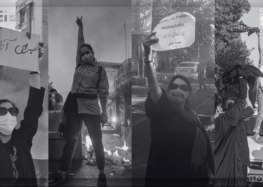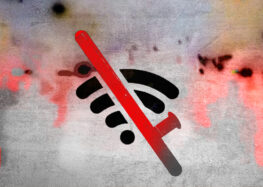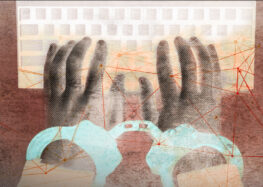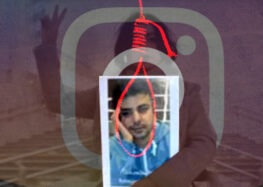Introduction
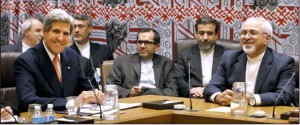
The Rouhani administration has pushed back some–a statement defending the need for open Internet access is made, a block on an application is removed–but it has largely refrained from taking the gloves off, focusing instead on its foreign policy objectives, particularly maintaining forward momentum on the P5+1 nuclear negotiations.
The Internet in Iran has increasingly become one of the central battlegrounds in the struggle between the state and its continued ability to control information and expression inside the country, and the citizenry, who desire free expression and engagement with the modern world.
The stakes are high. For the government, or, more accurately, the hardliners who control key centers of power in the country such as the judicial, intelligence and security services, restricting the population to its own world view is seen as an existential issue; loss of control over the narrative risks loss of their political power. For the citizenry, who resoundingly demonstrated their desire for greater rights and freedom with their election of the centrist president Hassan Rouhani in June 2013, unrestricted access to the Internet is a requirement for modern literacy and relevance.
Each side in this struggle is strong. Iran is one of the most censored countries in the world. The government already controls all print and broadcast media, and, given the centrality of digital communication, has increasingly focused its attention on controlling online content as well. It blocks millions of websites, monitors and hacks into private citizens’ online communications, is intensifying its development of the country’s National Intranet and other tools that will give the authorities control over Internet access inside Iran, criminalizes the use of social media, and targets IT and social media professionals for prosecution. It is considered second only to China in the sophistication of its Internet filtering and monitoring technologies. It is also ruthless in its persecution of those it feels have crossed red lines; it routinely arrests and detains individuals for online activities, and the murder, under torture by cyber police interrogators, of the blogger Sattar Beheshti within a few days of his detainment in November 2012, reflects the perceived stakes in this battle.
The population also has its strengths. It is young—over 60% of the population is under 30—and educated—85% of the population is literate, well above the regional average. It is also, increasingly, online: some 42 million people, or 55% of the population, are connected to the Internet. Its population has proven to be technologically savvy in finding ways to circumvent the state’s digital censorship, forcing the authorities to play an endless game of cat and mouse in which they must address each new censorship circumvention tool as it arises.
The struggle has intensified since Rouhani’s election. Rising expectations on the part of the population that the electoral mandate delivered to Rouhani would result in greater openness have clashed with hardline factions anxious to re-assert their primacy. Development of Internet filtering and monitoring tools has accelerated and arrests of IT professionals have increased. The Rouhani administration has pushed back some–a statement defending the need for open Internet access is made, a block on an application is removed–but it has largely refrained from taking the gloves off, focusing instead on its foreign policy objectives, particularly maintaining forward momentum on the P5+1 nuclear negotiations.
In this report by the International Campaign for Human Rights in Iran, the extent and nature of this intensifying digital censorship and control is comprehensively reviewed. The report presents a detailed overview of the policies, programs, institutional structure, and technological tools, methods, and capabilities of Iranian online control. It also analyzes the broader domestic political context in which this censorship is being carried out, examining the forces pushing for and against online censorship, and assesses the impact of this censorship on Iranian users, particularly individuals who use the Internet as a means to conduct social, political, and human rights activism.
The report is based on in-depth analysis of online data, extensive interviews with Iranian information technology professionals and users inside the country, public record statements by Iranian officials, and official government policies regarding Internet use in Iran.
The central conclusion is disturbing: not only is Iranian online censorship and control intensifying, its nature is changing dramatically and in ways that pose grave dangers to Iranian Internet users—especially those that use the Internet for political or social activism. In addition to its long-standing filtering and blocking activities, the government is increasingly moving away from traditional Internet filtering and blocking, focusing instead on developing and employing technologically sophisticated means to control access to the Internet inside Iran, and to monitor, undetected by the user, online communications. This is a far more insidious and dangerous form of repression, rendering the content of online communications fully accessible to the authorities. It profoundly increases the vulnerability of Internet users as it will allow the authorities to identify and target individuals at will. This could be crippling to Iranian civil society, encouraging self-censorship and preventing the kind of online communication and information sharing critically needed by journalists, students, activists, human rights defenders, and other members of Iranian civil society.
It is imperative that the international community and Iranian citizens understand the evolving nature of Internet control inside Iran, so that tools and strategies can be developed to counter such activities. This report by the Campaign is intended to contribute to that effort.


